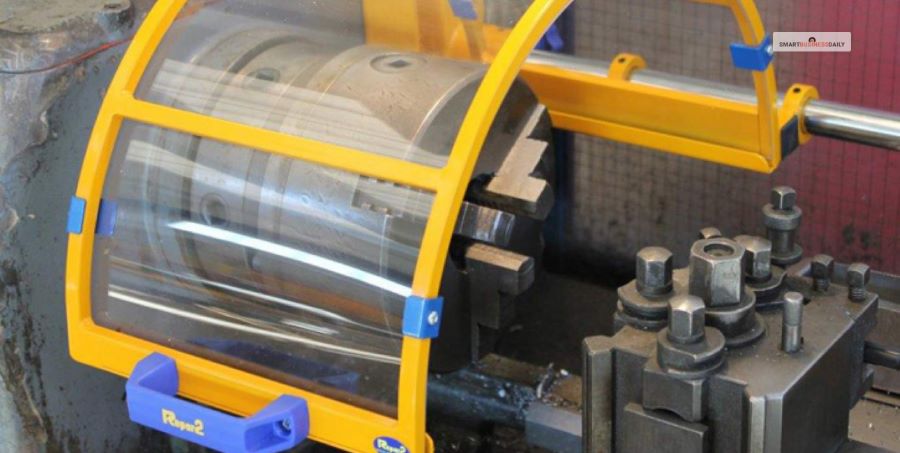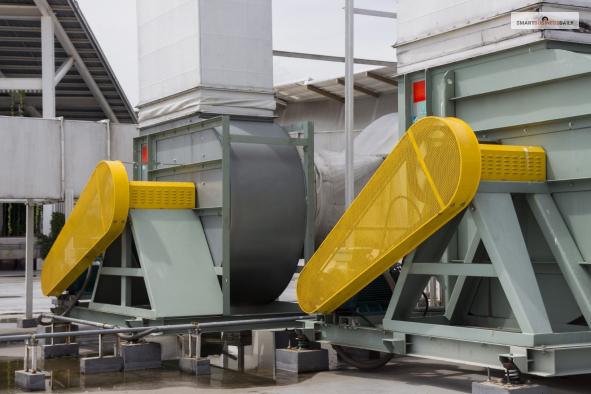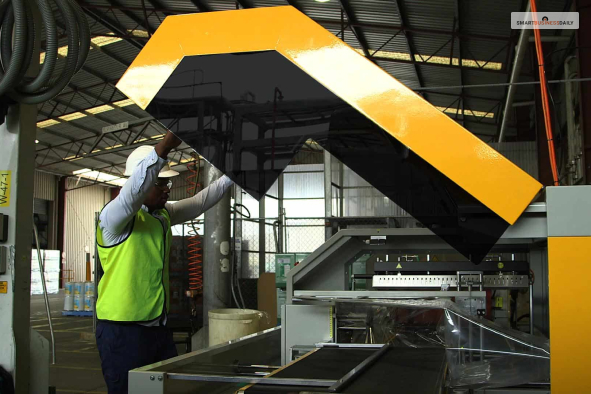Why Do Businesses Need Machine Guards?
5 Mins Read
Published on: 18 November 2022
Last Updated on: 11 November 2024

toc impalement
Employers are required by the Occupational Safety and Health Administration (OSHA) to maintain a secure workplace.
Machine guarding is one area in particular that may assist increase efficiency while also helping to improve worker safety. It is necessary to protect every machine component, feature, or procedure that might result in harm.
There are numerous aspects to using a machine properly to prevent injuries. The machine and the risks may provide the protection that must be utilized.
Operators must be aware of the procedures and conditions for removing guards. Without such protection, the harm that results might be serious or deadly.
Types Of Machine Guards Businesses Need

Given below are the different types of machine guards a business can use—
1. Fixed Guards
Fixed guards cannot be moved while the machine is in operation, have no moving parts, and are firmly fixed to the tool or machine.
They are most frequently employed to enclose the operation point or other risks, such as fan blades or flywheels, that the operator doesn’t need to touch. In addition, fixed guards must be taken apart and removed to undertake any type of adjustment or maintenance because they are built-in components of the machine.
2. Adjustable Guards
Engineering machinery also has adjustable guards that are permanently affixed. They contain movable components that may be manually modified to accommodate various operating circumstances.
An aperture can be created that permits brief communication with the machine itself. However, to determine the ideal working conditions for the guard, one must have a particular level of knowledge while operating an adjustable guard.
3. Self-Adjusting Guards
When a machine operator starts working on the potentially harmful components of the machine, self-adjusting guards adjust themselves automatically. They build a barrier that shifts in response to the volume of stock approaching the danger zone.
The opening created when the guard is moved aside can only accommodate the stock. The guard resumes its resting position once the stock has been taken out.
4. Interlocked Guards
Interlocked guards allow operators to service equipment without having to disassemble it, and they ensure that the equipment cannot start up while the guard is in use.
Interlocked guards are security measures that have movable parts and shut down or cut off the power when tampered with.
5. Point Of Operation Guards
The point of operation is where a machine is being operated or where a human operator is doing work. Point-of-operation guards are necessary for various devices, including power saws, alligator shears, and power presses.
They are made to protect machine workers from danger while working in locations where the machine is being operated.
The Use Of Plastic In Machine Gaurd
A machine guard is a safety device that shields users from potentially harmful moving components, flying objects, or sparks.
Using versatile plastics, a machine guard can survive longer and overcome various application failure issues. But, of course, it is important to choose and use plastics correctly to complement the workplace.
It is important to consider how several frequently used polymers’ qualities make them useful for machine guarding. Businesses can benefit from the advantages of some commonly used plastics, particularly Polycarbonate machine guards.
Advantages Of Using Machine Guards

Keep reading to learn how machine guards can benefit you—
1. For Safety Purposes
Machine guarding is a precaution used to stop people’s bodies and foreign items from coming into contact with moving or hazardous equipment parts. Certain machinery specific to the oil and gas sector requires the right machine guarding.
As a result of moving parts or faults, workers in the industry run the danger of suffering crushing injuries and amputations. In addition, employees may risk losing fingers, limbs, or other accidents if businesses do not safeguard them.
Companies should inspect machines for any damage that suggests they are unsafe to run. Employees need to be warned to stay away from machinery without machine guards.
2. To Meet The Requirements Of OSHA
Moving machine components can result in serious occupational accidents, including crushed fingers or hands, amputations, burns, or blindness. Therefore, OSHA requires at least one sort of guarding system in place for every piece of machinery.
Guarding has the following objectives:
- Prevent contact with the device’s potentially harmful locations.
- A machine guard and apparatus should be secured so that staff members cannot alter or tamper with particular components.
- While using the equipment normally or during maintenance, avoid splashes or falling debris.
- Without affecting output or efficiency, it enables simple machine operation.
Employers must adhere to a set of guidelines and standards established by the Occupational Safety and Health Administration (OSHA).
These requirements include ensuring that firms give workers safety training and personal protective equipment. The machine guarding systems provided by Southwest Solutions are all OSHA compliant since they are committed to ensuring worker safety.
3. Cost Cutting
Amputations, lacerations, crushing injuries, and abrasions are all reduced by machine guarding. Without such protection, the harm that results might be serious or deadly.
Therefore, even if you believe you can work more quickly without a guard on a machine you are currently using, there is never a valid reason to do so.
A second research found that “US companies paid $48.6 billion for wage and productivity losses, medical expenditures, and administrative expenses for workers harmed on the job,” putting the total indirect and direct cost of workplace injuries at an astonishing $128 billion.
Direct costs of a workplace accident are out-of-pocket costs like ER and hospital bills. Machine protection will lower your expenditures. As a result, there will be fewer workplace accidents, which will result in cheaper insurance costs.
These guards can shield your business from OSHA fines. In addition, you can reduce expenses as fewer workers will need to go to the hospital or doctor due to accidents at work.
Related Resource: The Benefits of Using Capping Machines for Your Business
Get A Complete Solution With Machine Guards
In order to deliver completely functioning bespoke machine guarding solutions, service providers offer a complete machine guarding solution that includes the accessories, tools, materials, and services required.
To satisfy the unique requirements of the customer, each system is customized. In addition, we have qualified personnel trained to interview you to gather the vital data required to create the ideal solution for your requirements.
Read Also:


















Comments Are Closed For This Article